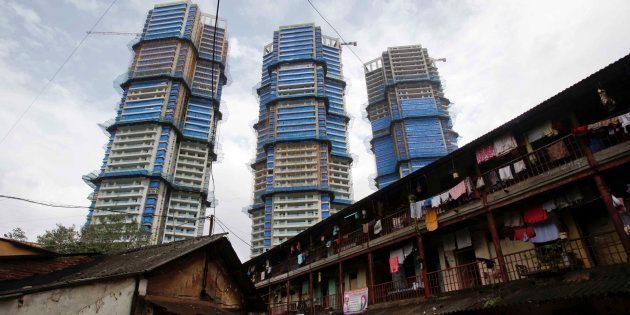
Mark Zuckerberg is wealthier than the poorest 40% of Indians, and Mukesh Ambani is worth more than the poorest 30% of Indians, a new report by Oxfam says. While Oxfam might be misstating some facts on global inequality, the data on Indian inequality really is that bad.
The report, released on Monday morning, is an annual publication released by the advocacy group Oxfam to coincide with the World Economic Forum in Davos. This year, Oxfam found that the world's eight richest men - including Microsoft co-founder Bill Gates and Facebook co-founder Zuckerberg - were worth $426 billion between them, or more than the combined wealth of the poorest half of the world.
In India, the richest 1% is worth as much as the bottom 90% put together. The 57 richest Indians have a combined wealth of $248.4 billion, or as much as the bottom 70% of the country put together. Reliance Industries chairman and managing director Mukesh Ambani alone, with a wealth of $19.3 billion, is worth more than the bottom 30% of Indians.
Oxfam uses the annual Credit Suisse Wealth Report to work out the wealth of people in a country by deciles (groups of 10%) or percentiles (every 1%). In Credit Suisse data, wealth is the value of an individual's assets minus her debt, and all data is converted to US dollars and compared. For most rich countries, Credit Suisse used Household Balance Sheet (HBS) data, while for India and China, it uses national household survey data. For India, this is the All India Debt and Investment Survey conducted by the National Sample Survey Office, a nationally representative household survey that is widely used by economists in India and the world as a source for Indian asset and debt data; the most recent data for India is from 2012-13. For the wealth of the world's richest individuals, Oxfam uses data from the Forbes Billionaires List.
Oxfam's use of wealth data causes some immediate problems. As economics writers have pointed out in the past, since debt is factored into wealth, relatively well off people who may take large loans temporarily might find themselves among the world's poorest. This is partially behind the presence of the US and Europe among the world's "poorest" going by Credit Suisse data; in 2016, Indians made up 14.7% of the world's poorest decile, as might be expected. But look who else is in there - Americans make up 4.4% of the world's poorest decile using this methodology, and Europeans 13.7%. There is clearly something strange going on, since Americans are absent in the next four poorest deciles.
By most other commonly used definitions of poverty, this is surprising; India has over 20% of its people living on less than $2 a day, while the US has virtually none. What pushes Americans and Europeans into the world's poorest 10% is debt - average debt per adult in the US is $33,800 as against $58 in India.
Oxfam has been at pains to point out that the biggest determinants of debt in the US and Europe as well are being young, single and poorly educated, the implication being that it isn't London bankers taking loans to buy Audis who find themselves sharing space with agricultural labourers from India in that bottom 10%. While this is true, it still seems unfair for debt to create an artificial wealth distribution and for this to skew headlines. Since the world's 'poorest' 10% are heavily indebted, their combined assets are in the negative (-$1,100 billion). While the combined wealth of the next four deciles is $1509 billion, once you add the poorest decile, the combined wealth shrinks to $409 billion. This creates some logical traps; the richest eight men are richer than the poorest 50% put together (combined wealth $409 billion), but are not richer than the poorest 10-20% and the poorest 20-30% put together. That makes no sense, and makes for a much less sensational headline.
This is much less of a problem when looking at inequality within India alone. If you look at the original data source, the NSSO survey, it's clear that the only Indians with negative wealth are the poorest 20% of urban Indians--their assets are tiny, and their modest debt drives them into negative wealth. They aren't like a relatively well-off American lawyer whose wealth might be negative as he is still paying off his student loan. The rich in India do take loans, but it doesn't push their net wealth into the red.
Even if you remove the poorest 10% of Indians with negative wealth from the Credit Suisse/ Oxfam data to undo the impact of negative wealth, the results do not change much. The second and third deciles--the next poorest 20% of Indians--may not have negative wealth, but their wealth is still extremely modest; just 0.66% of India's total wealth put together. Mukesh Ambani is still almost as rich as the second and third poorest deciles put together, and the richest 1% of Indians still own more wealth than the remaining 90% put together.